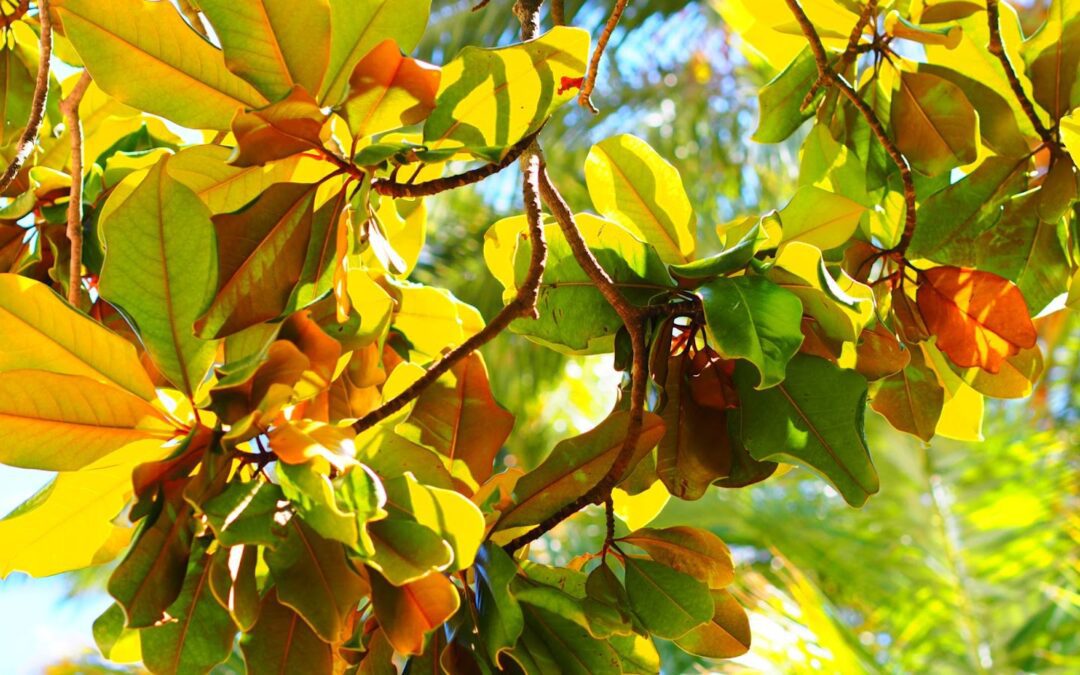Pecan trees are a native tree to the Mississippi floodplain, which explains why they frequent Southern landscapes, not to mention famous Southern dishes like sweet potato casserole and pecan pie. But, like other tree nuts, pecans are not available year-round!
What time of year do pecan trees bless us with their bounty, you might wonder? Alongside other autumn treats, such as apples and chestnuts, pecans begin to fall in mid-October and can be harvested through November.
Harvesting pecans is a fairly straightforward process; pecans naturally fall from the branches of the tree, and they can be knocked down or shaken from the tree. At the same time, there are several things we at Georgia Pecan Nursery recommend that you do to prepare for pecan season.
Whether you are an aspiring pecan farmer or a homeowner with a single pecan tree in your yard, take the following steps to have your best pecan harvest yet!
- Protect Your Tree from Aphids
- Watch for Indicators of Ripening
- Maintain the Ground Around the Tree
- Gather Before the Wildlife Does
- Decide on A Place for Drying, Curing
Georgia Pecan Nursery strives for the highest quality nursery stock and pecan tree sales in Georgia. Visit our farm or shop our website!
Protect Your Tree from Aphids
The leaves of your pecan tree are responsible for storing the energy that makes its pecan crop possible. Black and yellow aphids, unfortunately, are pest species that damage pecan tree leaves and affect their harvest. With that being said, you will need to watch for signs of aphid problems – such as premature-falling leaves, discolored leaves, or nymph clusters – and take action if necessary.
You can begin to watch for aphid damage as early as the spring. Neonicotinoid insecticides can work to treat black aphids, as well as chlorpyrifos for both black and yellow aphids; the University of Georgia (UGA) recommends avoiding using these insecticides until late in the growing season, if possible. Alternative treatments include using a high-pressure hose spray or releasing ladybugs to eat the aphids.
Watch for Indicators of Ripening
Late summer is a good time to begin looking at how big you can expect your pecans to be when harvest time comes. Pecans reach their full potential at this point in the growing season, and you should be able to spot them in the branches of the tree.
This is also a good time to begin watching for whether cracks are visible or forming on the husks – or outer shell – around the pecans. The best rule of thumb to know whether your pecan nuts are getting close or ready to be harvested is when the husks turn dark brown and begin falling to the ground.
Maintain the Ground Around the Tree
Pecan trees are like most trees in that they require some maintenance. Unfortunately, pecan trees drop more than nuts; they also frequently shed their leaves, branches, and the husks of the pecans. When harvesting season arrives, you might find it difficult to find the pecan nuts underneath a carpet of leaves and other debris.
Raking and mowing the area under and around your pecan tree will make harvesting and collecting the nuts much easier. Do your due diligence now and save yourself the time and frustration later!
Gather Before the Wildlife Does
When it comes to pecan harvesting, you might need to consider a proactive approach. Why? Because various wildlife love pecans, too! This includes crows and other birds, squirrels, mice, racoons, and deer, to name a few.
If you would prefer to cut down on the number of critters clamoring to your yard for freshly fallen pecans, you will either need to knock the pecans from the tree at the first sign of cracking husks, or you can use a pecan picker to gather as many fallen pecans as possible each time you gather. Both will keep pecans from lingering on the ground for too long, which is what attracts the wildlife.
Decide on A Place for Drying, Curing
Once you have harvested your pecans and inspected their quality, you will need to dry and cure them before you can eat them or store them. To do this, you will need to have a designated area where the nuts can be spread out and air dried for up to two weeks. Depending on the age and yield of your pecan tree, you might need a space anywhere from the size of a dining room table to a work shed or garage!
Simply spread the pecans on a plastic sheet in a thin layer and where they receive plenty of circulating air. Set up a fan to blow across the nuts and stir them yourself from time-to-time to speed up the process. You will know the pecans are properly dried when the husk and kernel become brittle and separate from the nut itself.
Visit our website to learn more about planting and caring for your pecan trees. Or, contact us about purchasing from our farm!

